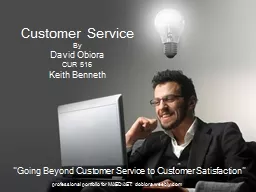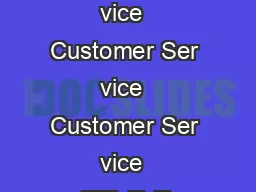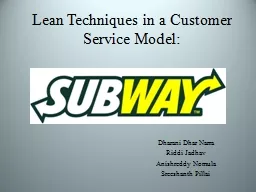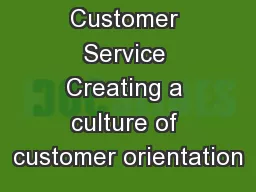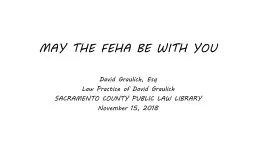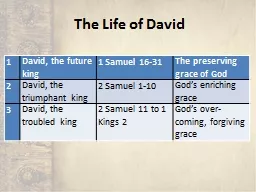PPT-Customer Service By David Obiora
Author : liane-varnes | Published Date : 2018-11-07
CUR 516 Keith Benneth Going Beyond Customer Service to Customer Satisfaction professional portfolio for MAEDAET dobioraweeblycom Introduction Customers Why do
Presentation Embed Code
Download Presentation
Download Presentation The PPT/PDF document "Customer Service By David Obiora" is the property of its rightful owner. Permission is granted to download and print the materials on this website for personal, non-commercial use only, and to display it on your personal computer provided you do not modify the materials and that you retain all copyright notices contained in the materials. By downloading content from our website, you accept the terms of this agreement.
Customer Service By David Obiora: Transcript
Download Rules Of Document
"Customer Service By David Obiora"The content belongs to its owner. You may download and print it for personal use, without modification, and keep all copyright notices. By downloading, you agree to these terms.
Related Documents

